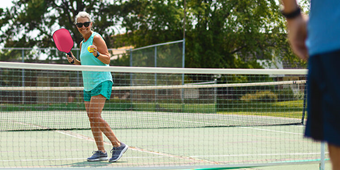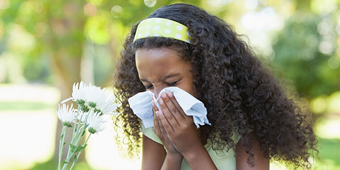How Youth Can Safely Return to Group Sports

Find Your Perfect Match
Answer a few questions and we'll provide you with a list of primary care providers that best fit your needs.
As children and teens return to team sports across Ohio, parents and athletes need to be vigilant about following health recommendations. The COVID-19 pandemic continues as we slowly return to life’s activities.
To learn more about guidelines parents and youth should keep in mind, Premier Health Now talked with Karen Shafer, MD, JD, at Premier Orthopedics.
“We know the virus spreads very easily between people, and there are no guarantees for safety,” says Dr. Shafer. “We also know that athletes may come back not at their peak performance levels.”
Masks, Social Distancing And Symptoms
To keep your children healthy and safe, Dr. Shafer suggests talking with them about hygiene and social distancing practices as they return to workouts, practices, and games. That means no high fives, no handshakes, no hugs. COVID-19 is a serious illness. Athletes must recognize this.
Teams should arrange pre-workout screenings to check travel history and whether anyone close to the player tested positive for COVID-19. Everyone’s temperature should be taken: kids, coaches, and spectators. A person with a temperature above 100.4 degrees has a fever and should go home.
Heath officials recommend youth athletes:
- Wear a breathable mask in close contact sports
- Maintain a social distance of 6 feet
- Wash hands frequently
- Stay home if they feel sick
- Do not share personal equipment
- Disinfect any shared equipment regularly
You can help prevent the spread of COVID-19 by knowing its symptoms and helping your children recognize the signs, says Dr. Shafer. Anyone with symptoms should stay at home. The most common coronavirus symptoms include:
- Chest tightness
- Chills
- Cough
- Fatigue
- Fever
- Headaches
- Muscle aches
- Runny nose
- Shortness of breath
- Sore throat
- Upset stomach
- New loss of taste or smell
Doctors are still learning how COVID-19 affects children. Additional symptoms in young people include inflammation, rashes, swelling of the hands and feet, joint pain, and dizziness.
It’s important to remember that some people may show no symptoms but still could pass on the virus, Dr. Shafer says. “Therefore, everyone must maintain these important protection guidelines regardless of their symptom status.”
Phased-in Return To Play
Each sport carries its own risks. Return-to-play plans will vary depending on the level of contact involved, says Dr. Shafer. High-contact sports like basketball, football, soccer, and wrestling come with higher risks of spreading COVID-19. Individualized sports such as golf, running, swimming, and tennis are lower risk.
The Centers for Disease Control and Prevention recommends a phased-in return to play:
- Performing skill-building drills or conditioning at home, alone or with family members (lowest risk)
- Team-based practice (increasing risk)
- Within-team competition (more risk)
- Full competition between teams from the same local geographic area (even more risk)
- Full competition between teams from different geographic areas (highest risk)
Slowly Ramp Up Endurance
As your children venture back to the playing field, remind them to listen to their bodies and drink plenty of water, especially as practice moves outside.
Most young athletes have been idle for a few months. It’s best to take things slowly to avoid a sports injury. Workouts need to reflect that, says Dr. Shafer.
- Use low to moderate intensity for the first few weeks
- Start at an activity level that is 25 percent to 50 percent of peak performance
- Increase activity by 10 percent each week
- With warm weather, athletes should be mindful of the climate and slowly adjust to outdoor activity in increasing heat and humidity.
- Drink plenty of water
- Limit workouts to two or three hours a day
“Whenever possible, tailor the workout to the individual,” says Dr. Shafer. “If a child is sore, that’s one thing. If they are uncomfortable, they need to speak up so adjustments can be made.”
Find Your Perfect Match
Answer a few questions and we'll provide you with a list of primary care providers that best fit your needs.
Source: Karen Shafer, MD, JD, Premier Orthopedics; Centers for Disease Control and Prevention




